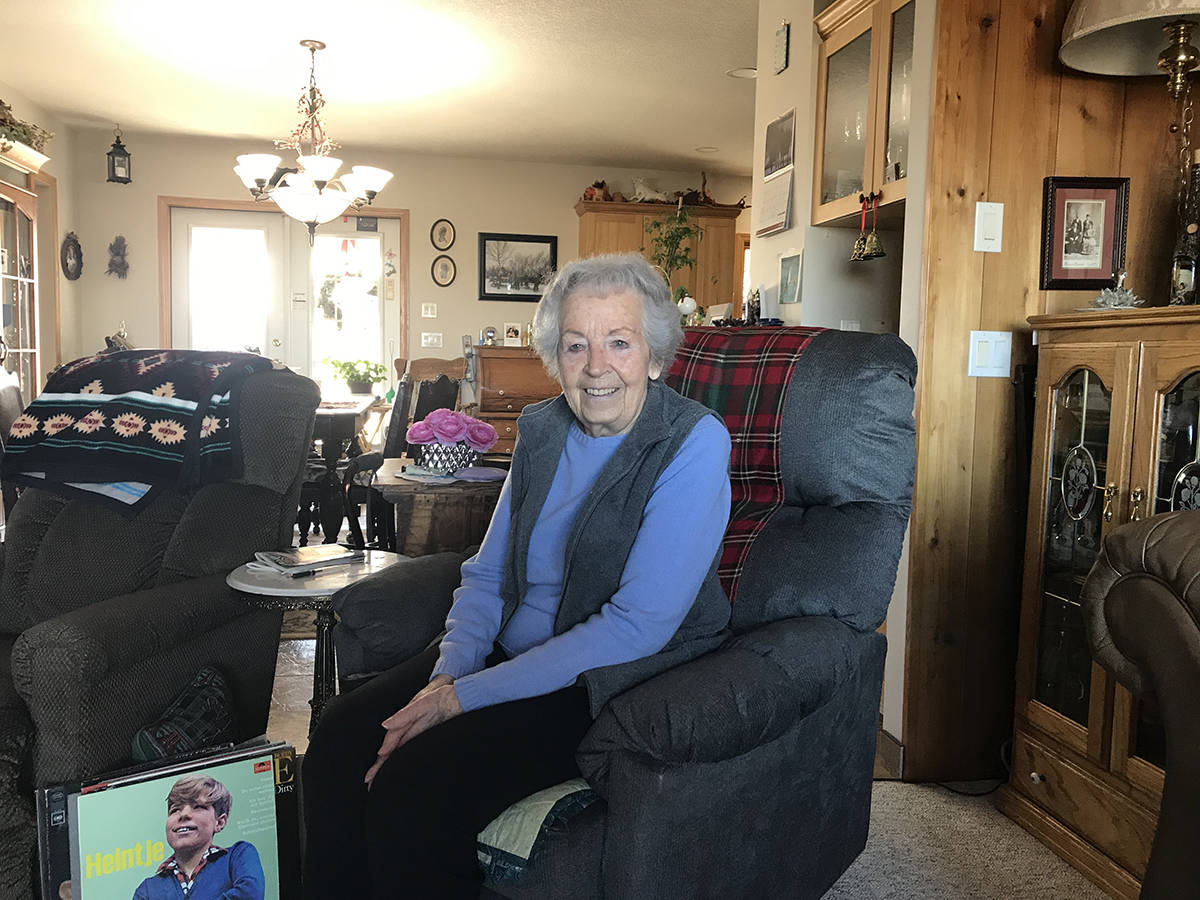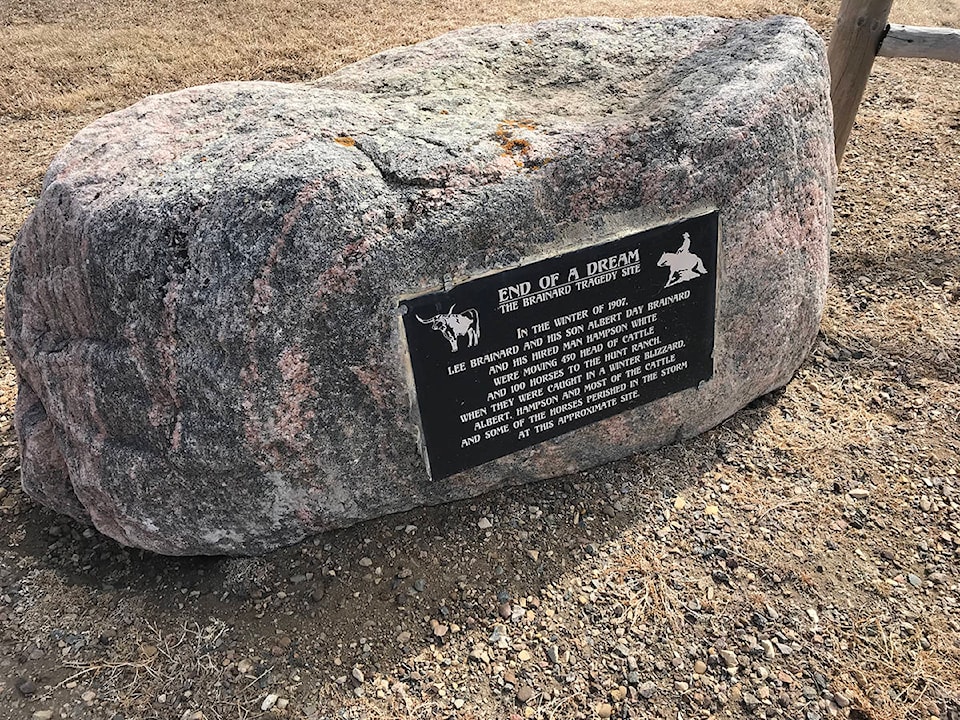On a quiet road near Scapa stands a simple yet striking memorial that bears witness to a story of both amazing survival and profound tragedy.
It was near this site during a raging blizzard in January of 1907 that two men from Montana lost their lives while trying to move hundreds of cattle to a nearby ranch.
Incredibly - another man by the name of Lee Brainard - survived. Somehow, some way - he virtually ‘felt’ his way through unimaginable conditions to the Hunt ranch about four miles away.
Tragically, he had to leave his deceased teenaged son Albert Day Brainard and his hired man Hampson White, plus hundreds of dead and dying cattle and horses.
“They were trying to move this large herd of cattle from the states up into Alberta,” explained Les Stulberg, a County of Stettler councillor who lives near the site as well.
“And then they realized that with winter, they would need feed. So they were heading to the Hunt ranch because somehow they had made contact with the Hunt brothers. They were just about there actually - when they got caught in this terrible blizzard.” As mentioned, it’s simply astonishing that Lee made it the Hunt ranch at all.
“Apparently he found a barbed wire fence and followed it, but he followed it the wrong way around to get to the ranch. He did eventually find it, but he was badly frozen,” he added.
For the remainder of the winter, the Hunt brothers would pile snow on the two deceased men to help protect and preserve their remains - the son was eventually buried in Montana while White was buried in the Stettler cemetery.
Harold Hunt, one of the original brothers, had a son by the name of Bill - who would eventually take over the ranch.
“Bill, through his father, knew where the site (of the tragedy) was, and it’s near Leo Erion’s farm today as well.”
Bill’s wife Lee Hunt still lives on the Hunt ranch to this day.
Her family has certainly established a solid legacy in the region, with the Hunts having put down roots near Endiang in the early 1900s.
Her daughter, Maureen Wasdal, reflected on the night that would change her family’s lives forever.
“It was dark for sure, because they thought it was an old steer banging on the door,” she explained. “Finally, they went to look and here’s a man laying there.” Incredibly, the family still has Brainard’s saddle in their possession.
Meanwhile, the actual memorial, which includes an inscription entitled ‘End of a Dream’, was planned out in 2006 and constructed in 2007 - the 100th anniversary of the tragedy.
As to how the memorial came about, several community members including Leo Erion, Tim Wigemyr, Gus Mattheis and Freda Viste, felt the event was such a critical part of the local history it just had to commemorated.
Interestingly, it is also virtually at the end of Erion’s driveway that the actual tragedy unfolded.
“One of Brainard’s relatives was out here just before the pandemic hit, and we figured that the way the crow flies, it was about four miles from there to the Hunt ranch,” said Erion, explaining just how unbelievable it is that Brainard survived his desperate search for help.
“What other landmarks would there have been?”
Stulberg agreed, emphasizing how there would have been literally nothing on the wind-swept prairies to help guide him to the safety of the Hunts.
Reflecting on the lonely site today, it’s tough to grasp how the men simply didn’t understand the sheer unpredictability of Alberta’s winter climate.
“They really did not understand the harshness of the Canadian winter,” said Stulberg. “They were in southern Alberta for a time, and of course with the chinooks, it must have been a very mild winter at that point.”
But the plunging temperatures swept in and sealed their fate.
“It was such a tragic event, and something like that had never happened in this area before or since,” he added. “The story has been told many times, and I think that for future generations, they just wanted to preserve the site.
“Once generations that are familiar with the story are gone, no one would really know where it happened.”
According to a story in the Endiang History book penned by Wilf and David Hunt, it was in the summer of 1906 that Lee Brainard had first come to this area seeking opportunities to re-locate his operation.
That’s when he initially connected with the Hunts.
They also describe his condition that night as he banged on their door for help.
“His hands and feet were badly frozen, and he ended up losing all of the toes on one foot and all but one on the other,” they wrote. “All of Brainard’s cattle were lost either frozen or driven clear out of the country and never found.”
Lee Brainard recovered and headed down south again, but later re-settled in the Peace River country. He also lived and worked near Fort St. John, B.C.
He passed away in 1938.

